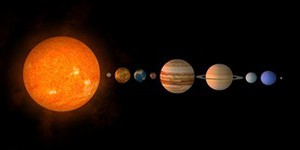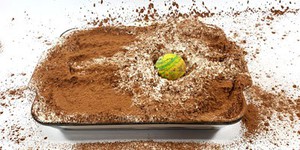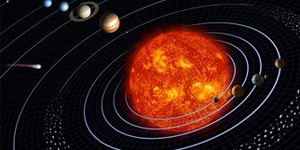Astronomy Science Experiments (55 results)
Fun science experiments to explore everything from kitchen chemistry to DIY mini drones. Easy to set up and perfect for home or school. Browse the collection and see what you want to try first!
Astronomy is science that will challenge your imagination. How many stars in a galaxy? How many galaxies in the known universe? How many strange worlds are out there on other planets, orbiting other stars, and what are they like? Is there life on planets besides Earth? The distances are mind-boggling; the numbers are immense.
|
Select a resource
Sort by
|
STEM Activity
115 reviews
Did you know that there are more planets than stars in our galaxy? All of these planets circle around a star, but only eight of them—Mercury, Venus, Earth, Mars, Jupiter, Saturn, Uranus and Neptune—circle around the Sun—the star in our solar system. This activity explores the relative size of these eight planets. Is one bigger than the others, or are they all about the same size?
Read more
STEM Activity
48 reviews
How did the Moon get its craters? What about the craters on Earth? Why do they look the way they do? Find out in this fun science activity, as you make your own craters by dropping balls into a tray of flour.
Read more
STEM Activity
71 reviews
Did you know that the Voyager 2 spacecraft took 12 years to travel from Earth to Neptune, the furthest planet in the solar system? This sounds like a really long time! Maybe not that long if you consider what distance the spacecraft had to travel to get from Earth to Neptune. In this activity, you will make a model of the planets in the solar system and specifically model their distances to scale. Will it explain why the Voyager 2 took so long? Try it and see!
Read more
Have you ever wondered what causes the tides in Earth's oceans? In this astronomy project, you will discover the answer for yourself! You will investigate how the Sun and Moon control tides in Earth's oceans.
Read more
Have you ever heard someone say that the moon is made of cheese? Even though the craters on the surface of the moon resemble holes in Swiss cheese, we know that this common myth is not true. Find out how craters are formed and why they are different sizes by doing this simple science project.
Read more
Do you live someplace where you get to experience the full glory of all four seasons? If so, you know well the heady blossoms and dramatic skies of spring; the long, sun-drenched days of summer; the trees shaking in crimson and gold in fall; and the sparkling, brittle snows of winter. But you might not know why we have these seasons, over and over again, in a cycle as predictable as the rising and setting of the Sun. The reasons for the seasons are surprising and have to do with Earth's tilt…
Read more
Have you ever looked up at the stars at night and wondered how fast they were moving or how far away they were? By studying how the brightness of a star changes with distance, you can answer those questions. In this astronomy science project, you'll create a model of starlight and use a sensor app with your smartphone to discover the key relationship between brightness and distance.
Read more
Why do the planets orbit the sun without flying off into space? Do they move in perfect circles or do their orbits take a different shape? And how could you possibly do a science project about any of this—you can't do an experiment with the planets! However, you can build a model of our solar system that demonstrates the concept of gravity, using balls of different sizes to represent the sun and planets. Watch the summary video for an excellent introduction to the model.
Think about how…
Read more
Have you ever seen amazing, colored images of objects in space, like stars or even entire galaxies? Some of these images were originally taken with forms of radiation that the human eye cannot actually see, like x-rays. In order to create the beautiful pictures you see in the news or online, scientists have to use an image-editing program to add color to them. In this astronomy science project, you will use raw x-ray data from NASA's Chandra X-ray Observatory telescope to create amazing…
Read more
How do astronomers collect stardust? They design and build satellites that are launched into space to collect particles on specially designed panels. Satellites can be sent to orbit around an object of interest: a planet, moon, or comet. In this experiment, you can build your own mini satellite and use it to collect some pretend stellar debris. If you simulate an asteroid impact, how much stellar dust will your satellite collect? Will placing your satellite at different "orbital" distances from…
Read more
|















